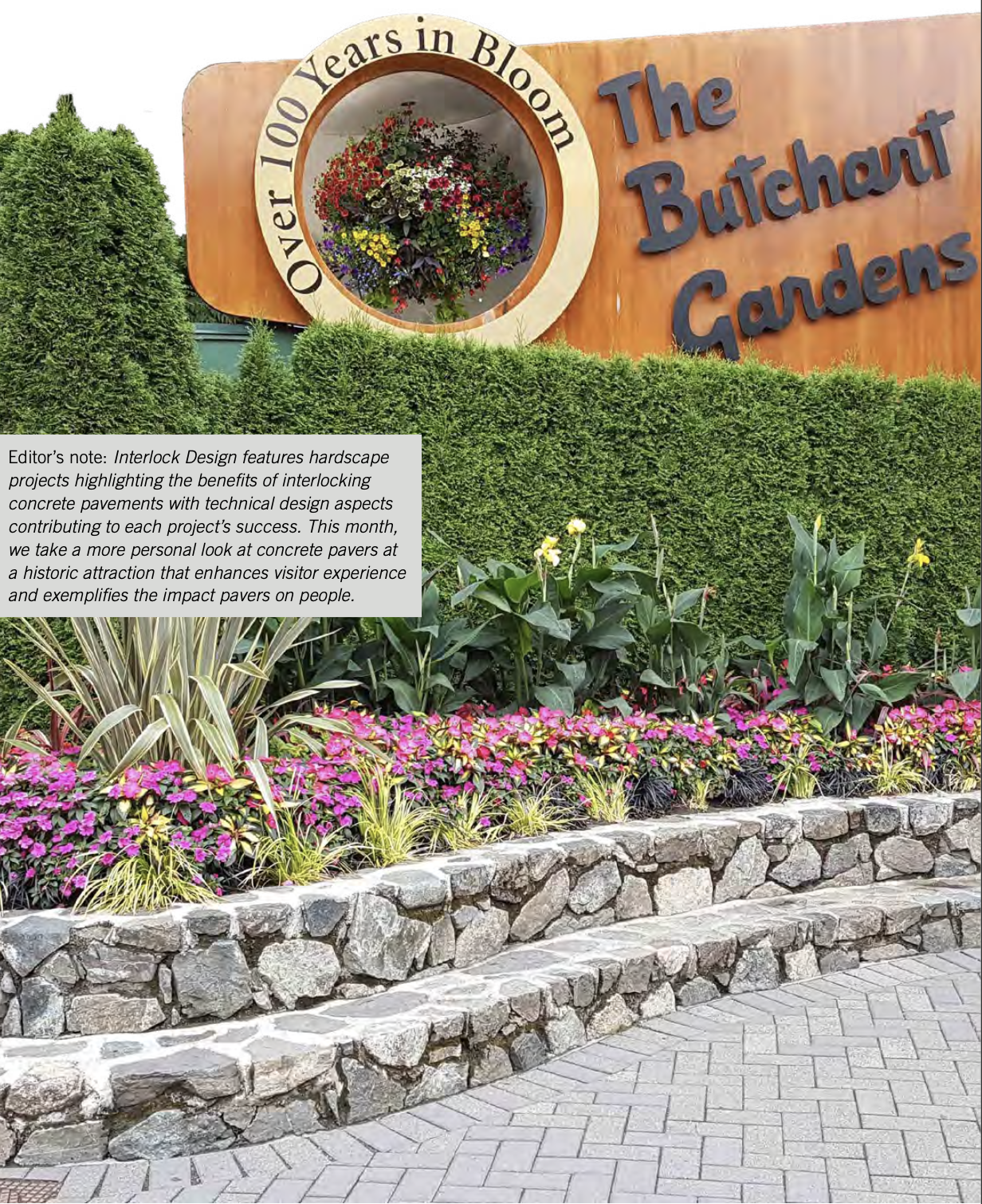Butchart Gardens
The Butchart Gardens boasts five themed areas featuring different flowers, shrubs, ground covers, and trees that combine to spotlight a particular type of plant and create a sense of place. The place exudes landscape architecture, i.e., plants organized to make spaces evoking emotions of awe and wonder.
Not surprisingly, concrete pavers in the entrance and paths visually tie together the themed gardens. A self-guided “tour” in The Gardens results in being caught up in an almost surreal smorgasbord of visual delights. You are taken to breathtaking, transcendent places, repeatedly.
Here are some of The Gardens’ places:
In 1906, Jennie Butchart, one of the original owners, started the Japanese Garden on the property, which served as the site for the Butchart home. This was the start of transforming the property from a cement company on a limestone quarry. Today, the lush one-acre garden features 500 Rhododendrons and Azaleas, 74 Japanese Maples, and about 650 feet of flowing streams.
One of the advantages of traveling on business is the opportunity to tack on vacation time to explore a place not visited previously, or seen years ago remembered with fading memories that need restoring. An opportunity arose in summer 2018 while in Vancouver, British Columbia on business. (Incidentally, Vancouver is a paver-intense city thanks to the high value placed by its citizens on sidewalks and public spaces.) The hotel concierge beckoned with a day tour to re-visit lovely Victoria, the provincial capital of British Columbia. The itinerary for the trip included a ferry ride to and from mainland BC and Vancouver Island, where Victoria is located, with a stop at The Butchart Gardens.
The main reason for choosing the tour was to visit lovely Victoria again. Graced with some attractive municipal gardens, the tourist city is known as “The Garden City.” Little did I know that The Butchart Gardens nearby presented a wonderful surprise packaged as 55 acres (22 ha) of superbly designed and impeccably kept gardens.
A glass orca greets visitors with the provincial capital buildings in the background.
All the while, the pavers gently remind your feet they are on solid ground, still attached to planet earth, while gently nudging you to continue to the next place and pause to take in another visual high. You float while grounded. From a practical perspective, concrete pavers improve accessibility for all that gravel or mulch can’t offer.
In the early 1980s, I visited a limestone quarry and cement
plant in southwest Virginia. The place was technically fascinating but a visual and environmental horror show. As a former quarry and cement plant, The Butchart Gardens gave me hope that exhausted quarries are redeemable because The Gardens were once a quarry owned by the Butcharts. Watch the video on the next page to see how a hole in a quarry is transformed at The Gardens.
The sunken Garden was created on the site of the owners’ limestone quarry when cement production ceased in 1912. The five-acre garden took nine years to create, includes 151 flower beds, and requires 65,000 bulbs for each spring’s display.
The Italian Garden was completed in 1926 and features 21,780 sf of gardens, 18 flower beds, and 85 varieties of plants—all located on the property’s former tennis court.
The Rose Garden, with seven types of roses, 280 varieties, 2,500 rose plants, and 30 rose arches, was built in 1929.
The newest garden—the Mediterranean Garden—was built in 2002. Tucked into a space by the parking lot, the garden features exotic plants from around the world that include nine garden beds, 110 plant varieties, and one Giant Agave Plant.
The Butchart Gardens timeline
Over a million visitors walk through The Butchart Gardens annually which requires up to 600 staff members to operate during peak season. Fifty full-time gardeners provide maintenance with support from 20 seasonal gardeners. All draw on 26 greenhouses to help supply and maintain the 55 acres of public gardens.
My favorite, however, was the Japanese Garden. I have been to Japan twice and seen many fine gardens, but most were on level ground. This Japanese garden was on a slope and the design took advantage of the topography and downhill water flows. The meandering movement and sound of water going downhill was as contemplative as the garden itself.









